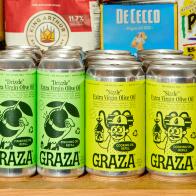
Gulab Jamun
- Level: Intermediate
- Total: 1 hr
- Active: 40 min
- Yield: 16 pieces
-
- Nutritional Analysis
- Per Serving
- Serving Size
- 1 of 20 servings
- Calories
- 369
- Total Fat
- 23 g
- Saturated Fat
- 4 g
- Carbohydrates
- 35 g
- Dietary Fiber
- 0 g
- Sugar
- 17 g
- Protein
- 10 g
- Cholesterol
- 12 mg
- Sodium
- 32 mg
- Level: Intermediate
- Total: 1 hr
- Active: 40 min
- Yield: 16 pieces
-
- Nutritional Analysis
- Per Serving
- Serving Size
- 1 of 20 servings
- Calories
- 369
- Total Fat
- 23 g
- Saturated Fat
- 4 g
- Carbohydrates
- 35 g
- Dietary Fiber
- 0 g
- Sugar
- 17 g
- Protein
- 10 g
- Cholesterol
- 12 mg
- Sodium
- 32 mg
Ingredients
Gulab Jamun:
Syrup:
Directions
- For the gulab jamun: Sift the milk powder, flour and baking soda together in a large bowl. Add the cream, lemon juice and ghee. Use your hands to make mix lightly into a stiff and slightly sticky dough. Add more cream if too dry or more flour if too wet. The dough should be smooth(ish). Try not to over knead the dough as that will make the balls dense. Cover the bowl and let it rest while you make the simple syrup.
- For the syrup: Combine the sugar, 1 1/2 cups water, cardamom seeds and saffron in a medium saucepan. Cook, stirring, over medium heat until the sugar is completely dissolved. Add the alcohol, if using, rosewater and lemon juice, bring to a boil and cook, stirring occasionally, until the consistency of a light syrup, 15 to 20 minutes. If using whole cardamom, remove the pod from the water.
- Fill a large Dutch oven halfway with oil, attach a deep-fry thermometer to the side of the pot and heat over medium-high heat to 280 to 285 degrees F. (It is important that the oil be kept at this temperature, if too hot the gulab jamun balls will brown on the outside but remain uncooked inside.)
- Meanwhile, grease your hands with ghee or oil. Roll the dough into sixteen 1-tablespoon size balls (walnut-sized balls), making sure there are no cracks. (The dough will double in size when fried and will grow some more when soaked in the simple syrup.)
- Once the oil is at the right temperature, gently add one ball at a time to the hot oil, making sure there is enough space for the balls to expand in size and not stick to each other. Gently stir the balls to make sure they are not sticking to the bottom of the pot or to each other. Fry the balls, turning every minute or so, until golden brown, 5 to 6 minutes. Use a slotted spoon to remove and transfer to a paper towel-lined baking sheet or plate. Repeat with the rest of the dough balls.
- Put the warm gulab jamun in a glass baking dish large enough to hold all the balls with a little space around them and pour the warm syrup over them.
- It's better to make the gulab jamun 1 to 2 hours before to let them soak the syrup. I like to zap or warm the jamuns before serving, but they can be had cold or at room temperature also. Refrigerate for up to 2 weeks in an airtight container. Garnish with nuts just before serving.
Cook’s Note
When measuring flour, we spoon it into a dry measuring cup and level off excess. (Scooping directly from the bag compacts the flour, resulting in dry baked goods.) Low fat dry milk powder can be found online and in some specialty baking stores. You can also use nonfat dry milk powder as a substitute (this is found in almost every grocery store), but the dough will be slightly drier and less fluffy once fried. You can use the leftover syrup to make a saffron lassi.
Choose a topic to find related recipes.





























